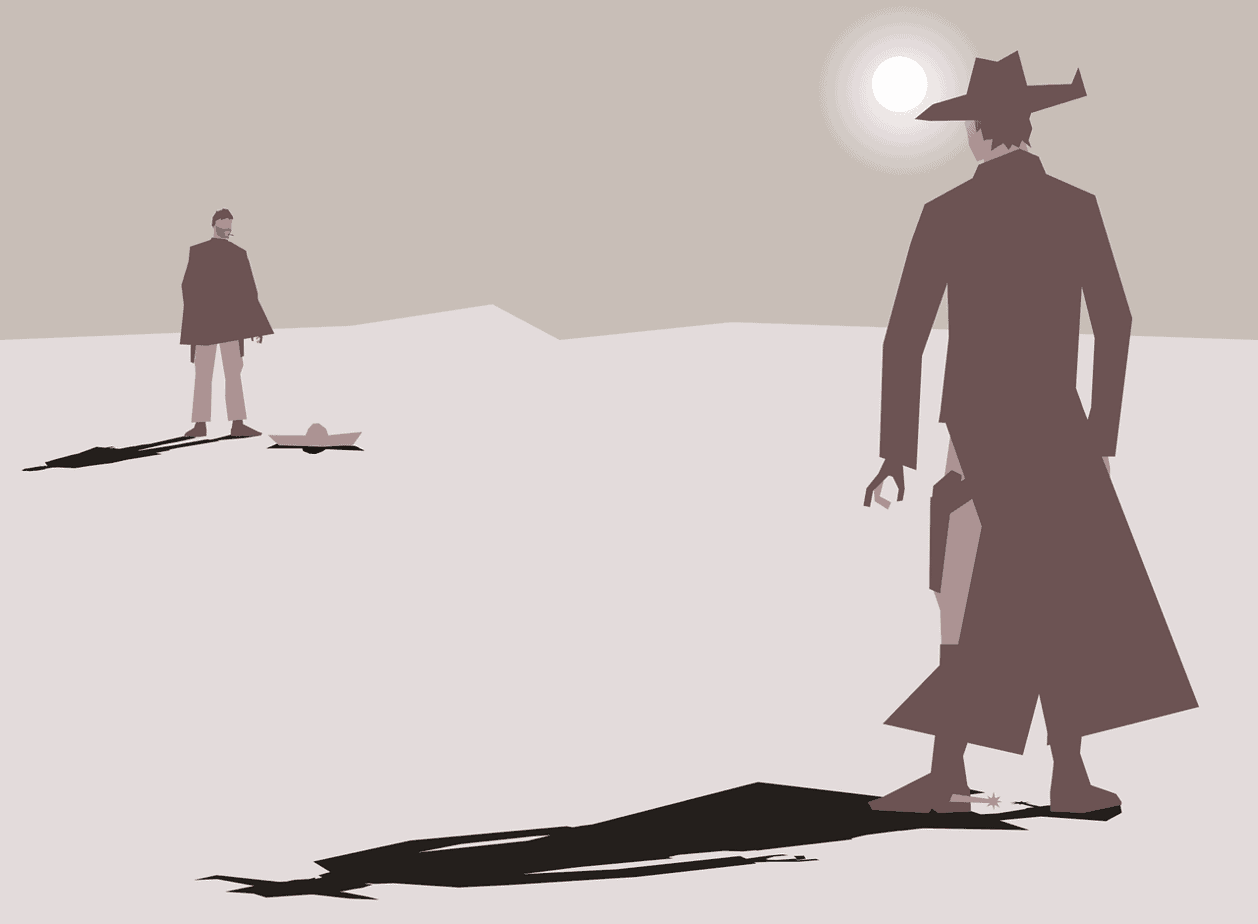You have spent time at the range and you feel good about your aim. Your gun fits your hand and you know what to do with it. Now it is time to think about what to do if you have to use it for self defense. There is a good chance that an assailant will not wait politely for you to draw your gun like they do on old Westerns.
Drawing your gun is a multistep process:
- Sweep clothing out of the way
- Open straps/fasteners/zippers
- Grasp the gun with your shooting hand
- Deactivate retention mechanism
- Pull the gun out of the holster
- Point the gun at the target
- If you have time, bring the sights to eye level
Practice Without Ammunition
Before you practice any of these moves, empty the ammunition out of your gun and leave it in another room. Triple check to make sure you did not leave a round in the chamber.
Point the muzzle safely even though you know it is empty. Family members, pets, and priceless heirlooms should never be in your sights because accidents happen.
Use snap caps if you are going to practice firing your gun after you draw it. These are dummy cartridges without the primer, the powder, and the bullet. Buy them in bright colors that do not resemble real ammunition because you don’t want to get confused.
Snap caps allow the gun to “fire” in a realistic manner without actually discharging the weapon. This saves wear and tear on the firing pin versus dry firing with nothing in the chamber.
Make sure you get the right snap caps for your gun.
Practice With Ammunition If Your Shooting Range Allows
If your gun range allows, you can practice drawing from the holster and actually shooting after you have gotten good at drawing your gun unloaded. Some ranges won’t allow this because of the chance for error.
Position Your Holster
The draw will look different depending on your choice of holster. Most people carry on or in the waistband. The gun is holstered between the one o’clock and four o’clock position at waist level, on your shooting side.
If you prefer a longer reach, holster the gun on the opposite side for a cross draw. Have the grip at the angle that allows you to grasp the gun comfortably. Some holsters allow you to adjust the cant, which is the angle at which the gun sits.
You can holster your gun at the back of your waist as well, but avoid the spinal column because falling backward on your gun could cause a serious injury in that position.
Other locations for a holster include the front of the belly in a kangaroo pouch, under the clothes in a belly band, attached to your brassiere, under the arm in a shoulder holster, or strapped onto your calf, thigh, or ankle.
Clear Your Clothing
If you are wearing a jacket, use your hand to sweep it out of the way and grip the butt of your gun as you would for shooting.
If an untucked shirt covers the gun, clear it by grabbing the hem with your nonshooting hand and lifting it above the gun while the shooting hand grabs the weapon.
A tucked shirt with an inside-the-waistband holster will require an extra tug with the non shooting hand to free the hem of the shirt and lift it out of the way.
To draw from a shoulder holster, use your nonshooting hand to pull open the jacket while the shooting hand establishes a grip on the gun. Bring the gun out in a forward arc to avoid shooting yourself in the nonshooting arm.
Drawing from behind the back requires clearing the clothing with the nondominant hand while reaching behind you to grip the gun. All of these positions are different enough to require you to practice them all if you carry in more than one position.
You want to build muscle memory so that you can do it on automatic when your brain is occupied with a threat.
The belly band, kangaroo style pouch, and bra holster are deeper methods of concealment and require more time and motion while you reach into your pants, up your shirt, or between the buttons of a button down shirt.
Practice these deeper reaches in front of the mirror to learn how much clearance is required for each type of holster.
The bra holster is called FlashBang because your assailant may get an eyeful before he feels the bite of your bullet, so be prepared to do what you have to do when the time comes to defend yourself.
A holster on your ankle or calf may require you to kneel before you draw your gun. Wear the holster on your nonshooting side.
Kneel with that leg forward, sweep the hem of your pant leg upward, and pull the gun out. You may have the option of resting your foot on a piece of furniture to get the gun out without kneeling. You need a nice wide pant leg for good access to an ankle holster.
Avoid bending at the waist to retrieve your gun because your balance is not stable in this position and the stress of the moment may affect your ability to keep your blood pressure stable. You don’t want to straighten back up with your gun only to find yourself dizzy.
Strapping a gun to your thigh means you have to pull your skirt up to clear the weapon, or thrust your hand way down into a very stretchy waistband.
Open Straps, Fasteners, or Zippers
Use your thumb to open any flaps or snaps that hold the gun in the holster.
Carrying offbody will necessitate practicing how you will draw to avoid fumbling. Carry a purse with the zipper or flap positioned so that you can access your gun quickly without having to rearrange the orientation of the purse or switch shoulders.
Practice unzipping a fanny pack in a hurry and make sure you orient the gun so the grip is in the right position for a quick grab.
With a backpack, make sure you can locate the right pocket quickly when it is on your back, and be aware of what is behind you. You don’t want to aim the muzzle at someone you love while you draw the gun.
Opening a fully zipped pouch like a daytimer is a two-handed operation. Hold the daytimer in your nonshooting hand, unzip it with the shooting hand, and then reach in for the gun.
Grasp the Gun With Your Shooting Hand
Get a good grip on the grip. Wrap the web between your thumb and forefinger around the backstrap as snugly as you can, with fingers on one side and thumb on the other.
Deactivate Retention
Some holsters have a level one retention device that requires you to press a button or a lever before you can lift the gun out of the holster. It’s important to practice this step so your muscle memory allows you to do this automatically when you face an actual threat.
Pull the Gun Out of the Holster
Lift upward to clear the holster. Rotate the muzzle forward and upward until you reach shooting level, pointing at the target.
Point the Gun at the Target
Using the retention position is indicated if the assailant is crowding you. In this case your elbows are at your ribs with the gun in front of you at midchest.
Wrap the supporting hand around the shooting hand on the gun to make it harder to take the gun away. With a single action semi-automatic, deactivate the safety at this point with your thumb.
A cross draw, where the gun is anchored at the waist on the opposite side of your body, requires care to avoid shooting yourself in the arm as you draw for self defense.
The goal with practicing your draw is smoothness. Speed will come later.
If You Have Time, Bring the Sights to Eye Level
Don’t look at the gun as you draw. Keep your eyes on the target. Bring the gun to eye level and then focus on the sights, keeping both eyes open if you can.
If you have decided to shoot, the trigger finger now goes into the trigger guard as you push your gun forward. Aim and shoot.
If you have not decided to shoot, keep your index finger extended along the frame until you have made up your mind. It is way too easy to tense up that finger in the heat of the moment and discharge a bullet unintentionally.
Drawing a gun is a set of coordinated motor movements. Practice them until your muscles know what to do. A smooth draw may save the life of someone you love.


